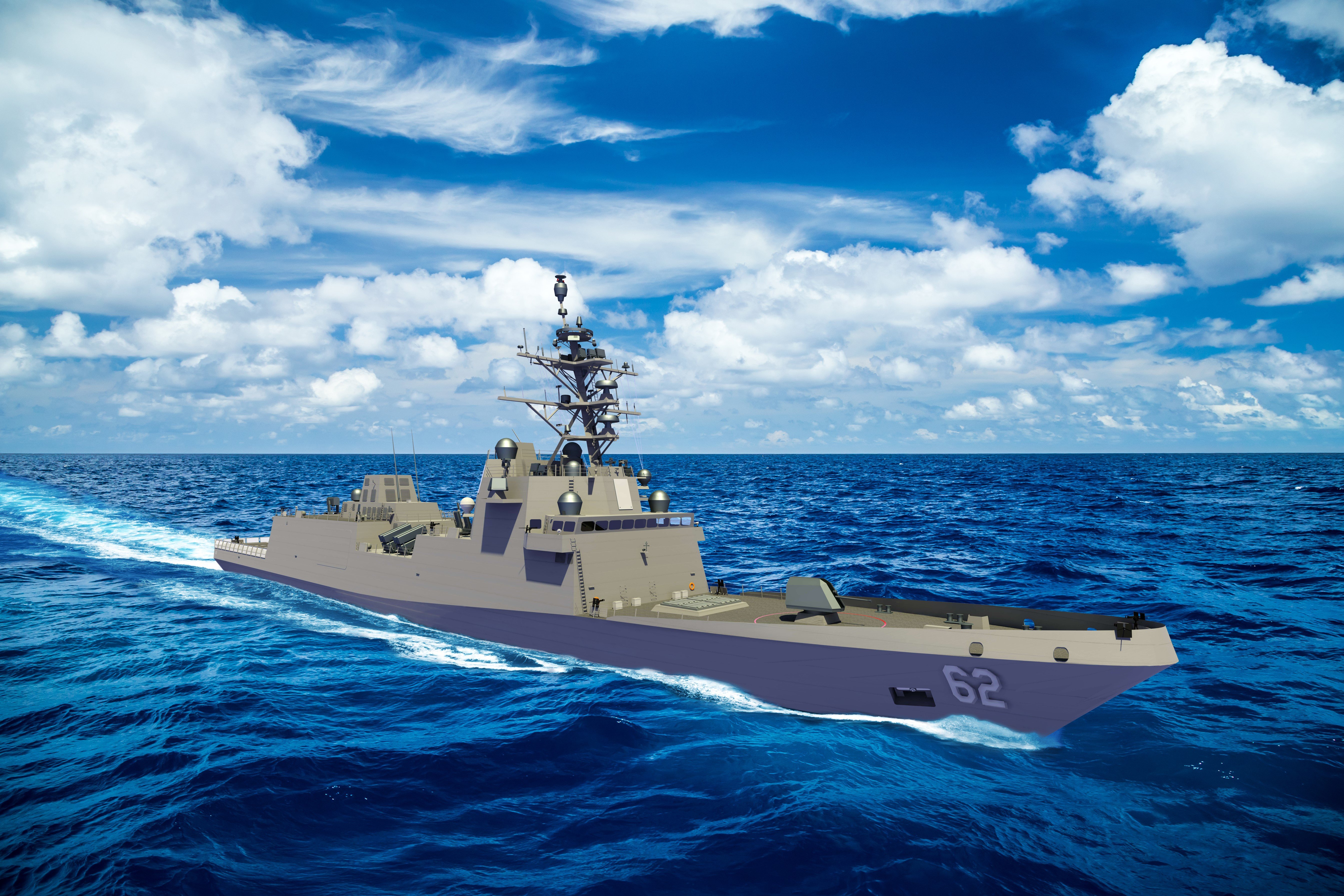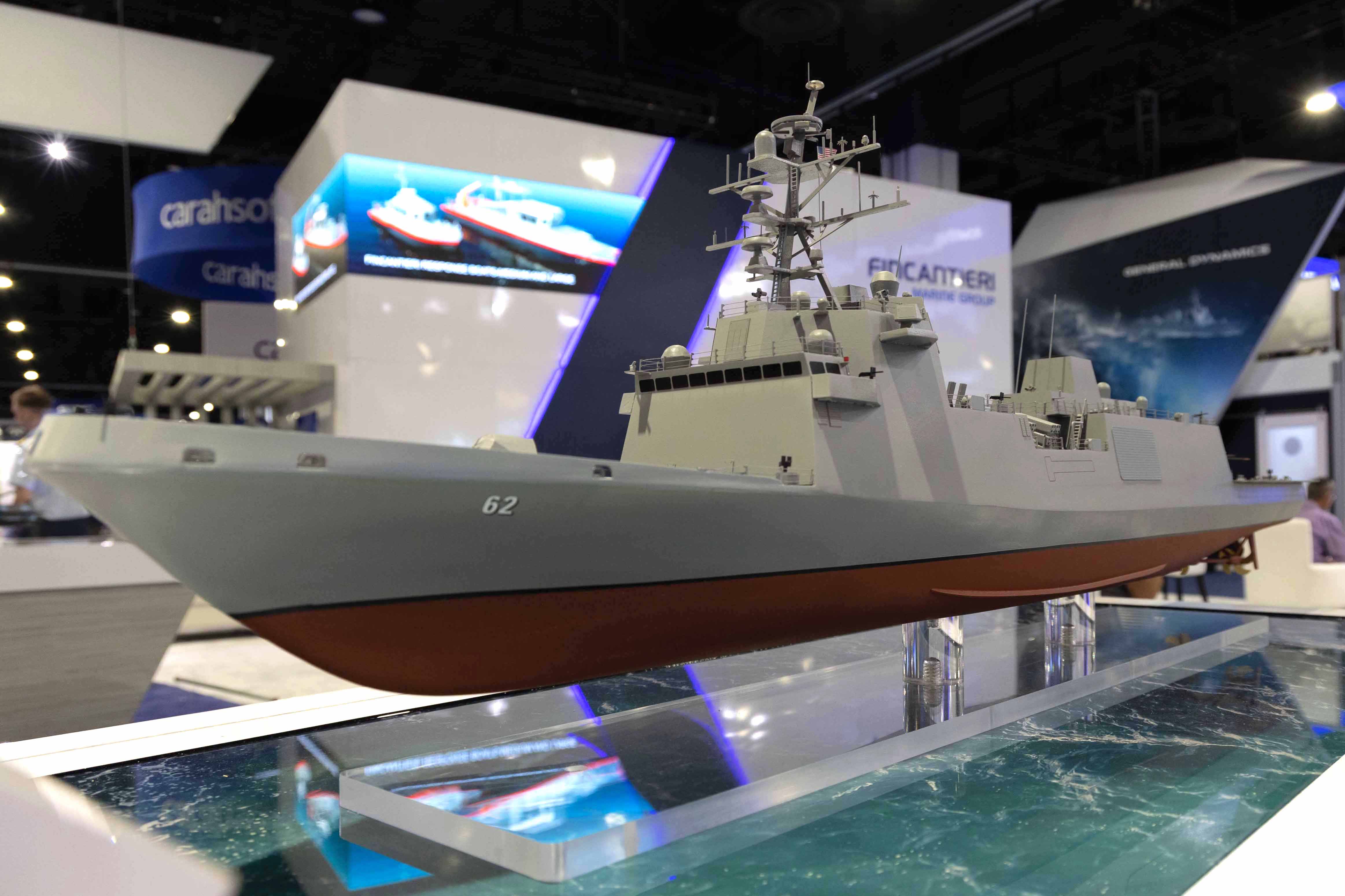
THE PENTAGON – Fincantieri Marinette Marine will officially start building the first Constellation-class frigate at its yard in Marinette, Wis., today.
The start of fabrication comes nearly two and a half years after the Navy issued Fincantieri the detail design and construction award for the first frigate in April 2020.
After finishing the critical design review in May and the production readiness review in July, the Navy green-lit the shipbuilder to start production, Rear Adm. Casey Moton, the program executive officer for unmanned and small combatants, told reporters in a roundtable this week.
Asked why it took the shipyard two and a half years to begin building the lead ship, Moton said both the service and Fincantieri wanted to complete the design as much as possible before beginning construction.
“It was maturing the design. It is a pretty healthy process that’s got to go on … that’s a fairly lengthy process of going through the functional design where you’re looking system by system. And then it’s a little bit of a spiral, right. If you change some things that they have impact on another [thing],” Moton said.
“It just takes a while to move through that process. In order to complete the design, the shipbuilder has to get all of their major vendors on contract because we’re literally at the level where it’s not just, okay here’s a pump, but we need to know which pump because we got to have the right circuit breakers to feed that pump. It is at quite [a] detailed level. That takes time. And mutually we and the shipbuilder agreed that design maturity was probably the single biggest factor we could do to reduce the risk of production,” he added.
While Fincantieri is the lead for the functional design, Gibbs & Cox is in charge of designing the ship’s 3D model, Moton said.
“Since the contract for Constellation-class detail design and construction was awarded in April 2020, Fincantieri and its team have been completing the detail design of ship systems – placing material suppliers under contract and developing the three dimensional model that is used for supporting production,” he said.
Fincantieri has also embarked on a capital improvement effort at the Marinette shipyard so it’s ready to build the frigates.

The detail design is just over 80 percent finished, which was the Navy’s goal prior to fabrication, Moton said.
“That’s a percentage beyond just the number. That percentage reflects two things – one is that we wanted to ensure the functional design was largely complete and that’s important because that’s what sets the systems and the equipment selection and all those types of things,” he told reporters. “The other part of it is making sure that the 3D model was complete enough to know that there’s still work that will happen a kind of the modular level, almost compartment level – but making sure that those ship-wide things were mature and stable.”
The lead ship in the class is slated to deliver to the Navy in 2026. The service’s requirement is 20 frigates and it has the option to bring in a second yard to build the small combatants. But Congress in Fiscal Year 2022 legislation mandated a pause on the second yard effort, arguing the Navy must mature the design before bringing in a second shipbuilder.
The Navy previously planned to buy two frigates per year starting in FY 2023, but slowed down that effort in the most recent budget submission. A service official during the FY 2023 budget rollout said the frigate’s procurement projection, which alternates between buying one ship per year and then two, reflects what one shipyard could build in the next five years.
Moton said the cadence at which the service buys the ships will depend on funding and industrial base capacity.
“The pace that we will build that frigate class is a function of that measured approach that we took initially. It’s a function of an approach that is balanced against topline constraints. It’s an approach that’s balanced against the entire industrial base and how quickly we might need to go to a second builder,” Moton said.
Navy officials would not give details on when they’d need to make a decision about a second yard, but said it would take Fincantieri about a year to put together the technical data package the service would have to give to the second builder.
“They are essentially producing a set of documents – electronic documents – that we could then hand to another shipbuilder to take a look at it. So we’ll keep an eye on that, we’ll see how it’s informed by the portfolio. We’ll know here as the next couple of years progress. As I said, there is a lot of advantage in terms of holding on getting that package because as the shipbuilder moves through production, there will be fixes and changes and things that need to happen,” Moton said.
“It’s kind of to our advantage to sort of wait as long as we can to get those good fixes, but also support when it looks like we’re going to need to put our an [request for proposal] if and when we do that for a second builder.”
Both HII’s Ingalls Shipbuilding and Austal USA are positioning themselves to bid for second line of the Constellation-class frigates, USNI News recently reported.
The Navy and Fincantieri adapted the Italian FREMM multi-mission frigate parent design so the Constellation-class frigates can field U.S. systems like Aegis Baseline 10 and C4I systems, Moton said.





